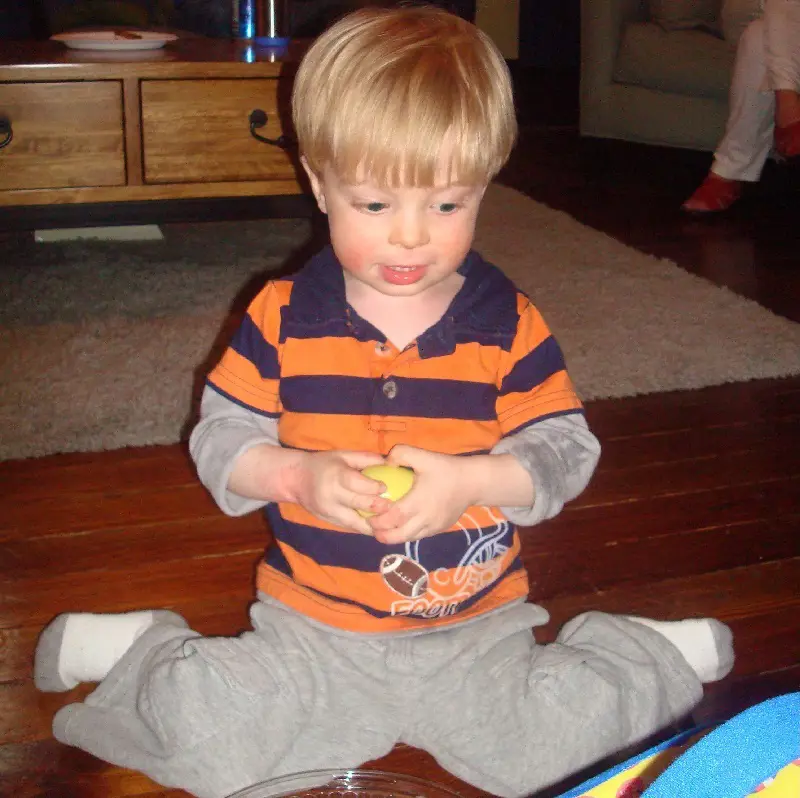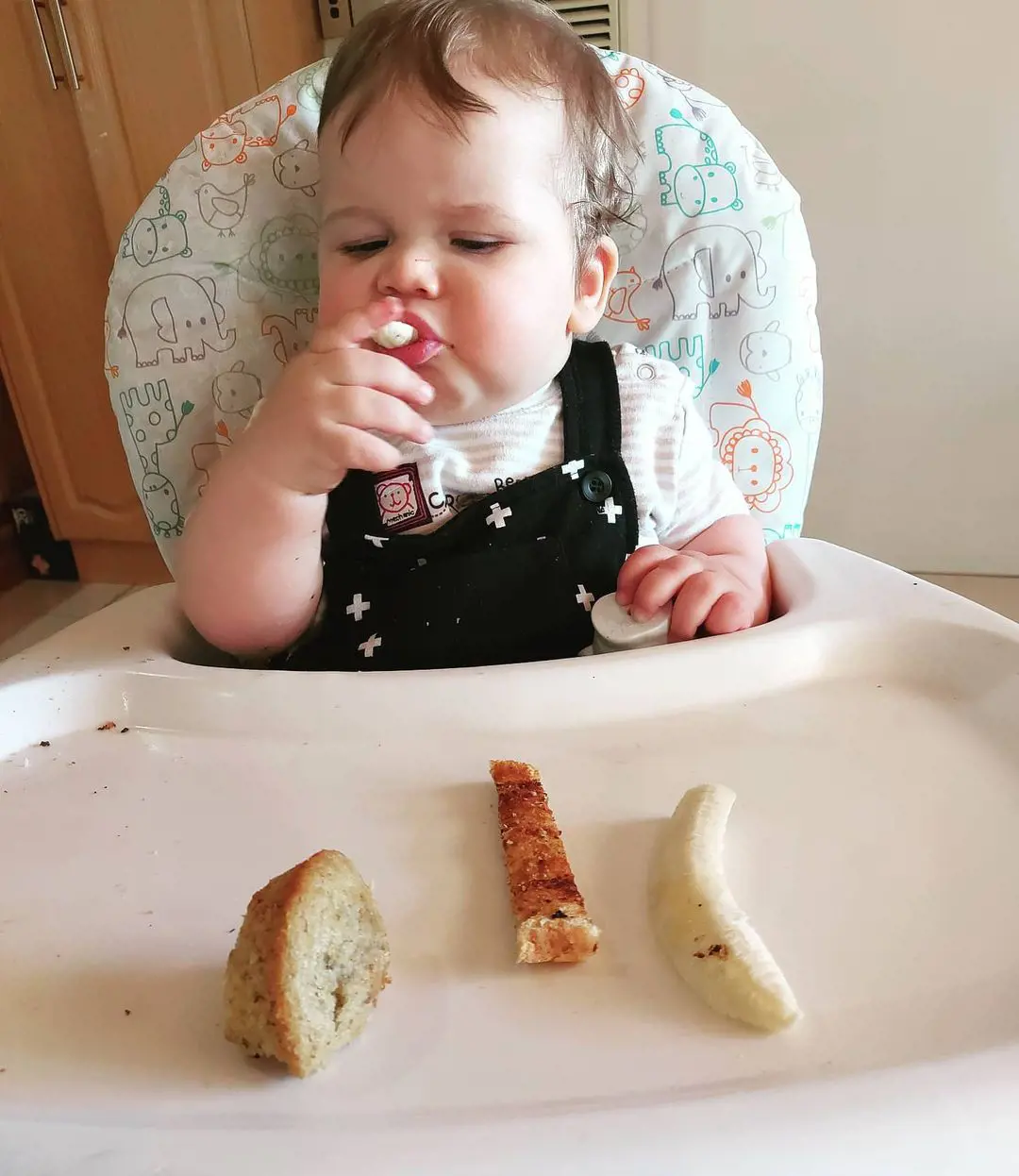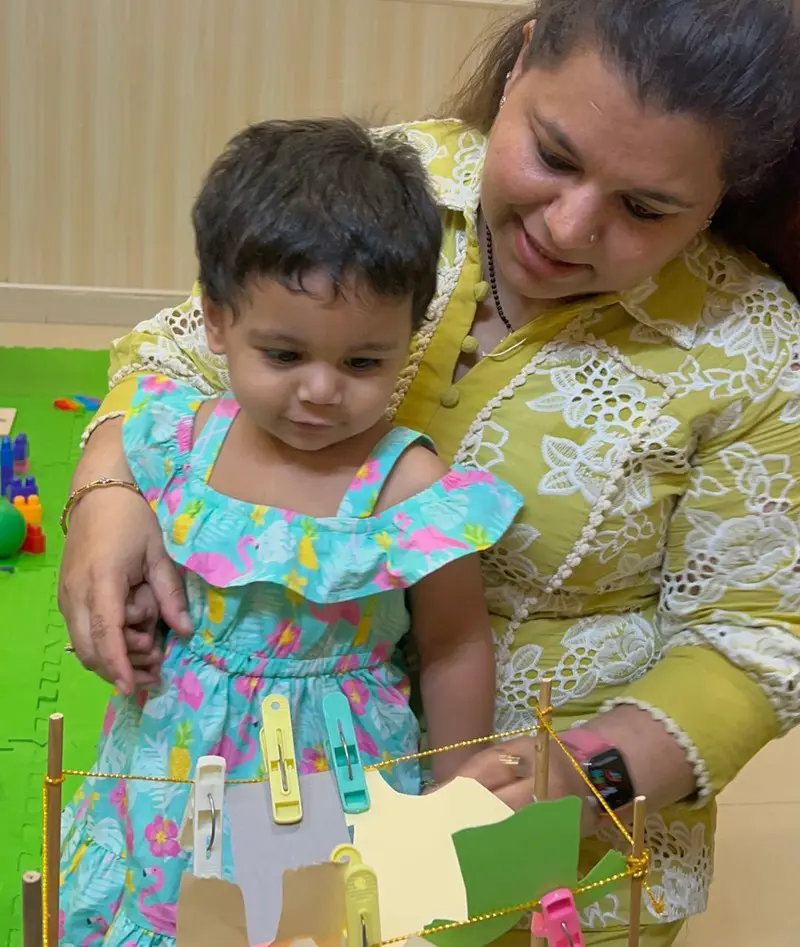You might have seen your children sitting on their legs forming a "W". The sitting position provides many children with a good base, thus being comfortable for them. They don't feel off-balance while playing and reaching for toys in this position.
In this article, we will discuss in detail about W sitting in children and whether is it good or bad for the children.
What is W sitting in child?
W sitting is just the position they automatically move to as children play at a low level. W sitting refers to a sitting place when the child's legs are on either side and has formed a W shape, with the knees bent. Their bottom is on the ground, with their feet behind them.
The W-sitting position feels comfortable to many children because they are offered a wide base of support, so they can sit and work on their play, rather than working on the sometimes distracting feeling of unsteadiness. It's so much easier to pick things up in a large W position, and they don't knock over as many things.
They use their upper bodies quite freely when they sit in a way that provides support to the lower body. This often proves very helpful for children who are concentrating on activities that require them to stay still, such as coloring or building with blocks.
With this position, they could also stay in one position for a longer time without having to balance all the time. It may be comfortable for children as well since they don't have to hold themselves up engaging the core muscles.
This sitting posture can also be a problem in the long run because of the delay it causes in a child's growth and development of motor skills. It may also always result in problems with the knees and the hips. This is because W sitting does not give room for the development of core muscles used for balance and coordination.
Instead, it restricts the hip movement of the child and increases pressure on the lower part of his body. In children, it will bring in developmental problems of sitting and standing postures at an advanced age.
W sitting in children may also limit the process of learning other sitting postures that may be more helpful and appropriate, such as cross-legged and straight-legged sitting.
How to prevent babies from W-sitting
To prevent babies from sitting in the W position for a longer period, parents can use the following tips:
1. Encourage Alternative Sitting Positions
Encourage your kids to try different sitting positions, such as cross-legged or legs straight out in front while playing or sitting on the floor. Use distractions in side-sitting or prone positions with amusements or toys.
For example, placing a toy in front of the child can encourage him to sit up straight with his legs straight out in front. The result of such activity includes improved hip and leg alignment.
2. Use a Supportive Seat
Provide supportive seating to your kids that encourages good sitting posture. Your child will not sit in a W position. Now your child can sit with their legs out or crisscross with a chair having 3 sides.
Now, less likely to sit in a W when they are in a non-supportive chair. Your child learns how to sit functionally and develops core and lower extremity musculature.
3. Promote Active Play
Engage your baby in activities that would provoke her to move around and use her muscles. Playing with toys offering reaching and stretching, crawling, and standing challenges her and builds up core strength and flexibility to easily adopt and hold healthier positions while sitting.
4. Provide Gentle Guidance
When you see your child sitting in the W position, then you can very subtly help them into a different position. Put the legs into a more supportive position without feeling as though they are being told off.
Let them move from one sitting posture to another as it naturally develops while playing.
5. Monitor Their Sitting Habits
Observe the sitting position of your baby, and help him or her make modifications in time. Guide them to sit in different positions when they are often returning to the W posture.
With time, some persistent reminders and modifications will help in changing the seating patterns of an individual.
6. Incorporate Tummy Time
Encourage your baby to lie on her or his tummy more often. A lot of tummy time provides better body stability in your infant and builds support muscles for ideal seating.
If you make tummy time fun with a variety of toys and playtime, your baby will slowly build up the strength to maintain improved sitting postures.
7. Introduce Sitting Toys
Give your kids toys that promote good sitting posture. Toys that encourage a baby to reach and grasp from various postural bases give practice in sitting with a large base of support and help your baby assume many of the rotated postures of the trunk, taking place within the first year.
Look for toys that invite children to play while sitting with extended legs, or crossed in front of them.
8. Use a Play Gym
Some toys will be hung in a play gym and may encourage the reaching and movement of children. While playing with the hanging toys, the kid's interest in reach may increase his interest in different sitting positions.
9. Create a Safe Play Area
Provide your kids with an enabling environment that shall support their exploration. Unthinkable numbers of sitting positions are practiced in a comfortable area where there are soft mats or cushioned flooring. An exemplary playspace will urge your baby to try out the different variations of sitting.
10. Model Good Posture
Show good sitting postures that the baby will imitate in different sitting postures. When you sit down with your baby to eat, show how to sit down with straddled legs or crossed legs. Since babies only imitate, you can train them on good sitting postures.
11. Incorporate Movement Activities
Introduce your baby to activities that are purposed to require flexibility and movement. Tumbling exercises will make him more agile, coordinated, and strong in the muscles. By doing so your baby will manage to sit up spontaneously in positions that are more to his advantage.
12. Encourage Dynamic Sitting
Now and then, introduce some dynamic sitting and shifting from a surface he is sitting on that is wobbly to a squishy surface.
All these activities will make sitting so much easier with your baby and in many different positions because they allow for a little build-up of strength and balance in the middle. Make playing fun by making it dynamic with seating.
13. Use Supportive Cushions
Prop the child around with cushions, supported either sitting cross-legged or straight out in front with the legs, so that the child learns healthy sitting postures. The cushions will guide the child on how to sit correctly by offering soft support.
14. Play Interactive Games
Engage your baby in active play which will yield movement and change in his sitting style. He will want to move his legs or find different sitting positions where he can continue playing games like "roll the ball" or even "peek-a-boo."
These active plays should be made very pleasurable and rewarding for children to stay interested.
15. Consult a Pediatrician or Specialist
It is always much better to consult a professional or even your baby's physician in case you have concerns about sitting well. They can give you advice and some exercises that may help in the proper sitting posture of your baby. Early action will help most problems from happening in the physical development of your baby.
These are the list of activities you can engage your children in to prevent them from W sitting.









